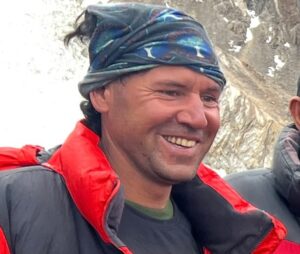As I stood outside the partially abandoned Hope Hall, I felt a chill. I would have liked to say that it was the autumn air, but in all honesty there was something very unsettling about the rusting iron caged, balcony that surrounds the second and third floors of the building. Piles of bricks and concrete from demolished structures lay on the side of the street. Why did this seem familiar?
“There was an iciness, a sinking, a sickening of the heart–an unredeemed dreariness of thought which no goading of the imagination could torture into aught of the sublime. What was it–I paused to think–what was it that so unnerved me in the contemplation of the House of Usher? It was a mystery all insoluble; nor could I grapple with the shadowy fancies that crowded upon me as I pondered.”
There it was. I was the unnamed narrator standing before the crumbling House of Usher…
As I get closer to the main hub of the Central State Hospital campus, every aspect of this project gets more difficult. Numerous calls to administration in an attempt to gain access to some of the abandoned buildings go unanswered. Despite that setback, I keep trying to get in touch with someone. Another challenge, and perhaps the most difficult is the task of researching the various forms of treatment that were prescribed to many patients in the early 20th century.
I would like to point out that the forms of treatment and the conditions which I will describe below are in no way exclusive to Central State Hospital and do not, to my knowledge, reflect current practices. This manner of patient care was quite prevalent in many areas around the world in the early 1900s. However, mental health practices have improved drastically over the past century.
I keep reminding myself that all of this history is important to me…Part of the reason I have kept at this is because I was diagnosed with Major Depressive Disorder and Attention Deficit Disorder at age 10. I spent a good chunk of my adolescence struggling with what that meant, with being sad and confused and acting out.
As an adult, behavioral therapy and medications have helped me manage extremely well, but it is difficult to think that I might have been placed in an institution such as Central State hospital less than a century ago. There were wards at the sanitarium for women and children, violent and non-violent alike. Articles mention the conditions in many of these wards. Too many patients, not enough doctors and nurses, not enough amenities. It sounds a lot like the American prison system. However, these conditions are not the worst facet of Central State Hospital –and most mental health facilities in the early 1900s.
The treatments that many patients received were far worse than the general conditions of the hospital. Patients with depression, bipolar disorder and mania received electroconvulsive therapy (ECT) without oxygen or anesthetics, which often resulted in brain damage and intense pain. This treatment was also used with “troublesome patients.” Historically, ETC involved passing moderate currents of electricity through the brain to induce seizures. This treatment was thought to somehow ‘reset’ the brain. Today, ECT therapy is better understood. It is used sparsely, in extreme cases where medication and behavioral therapy has proven unsuccessful. Today, ECT is about 50% effective, the risks and procedure is discussed with patients and oxygen (to prevent brain damage) and anesthetic is administered before hand.
Insulin shock therapy (IST) and insulin coma therapy (ICT), were also used for patients with schizophrenia at Central State Hospital. IST involved inducing extreme hypoglycemia using high doses of insulin several times a day. A similar method was used in ICT except insulin doses were so high that patients went into a coma. IST recipients reported severe pain, hunger and convulsions. Accounts are gruesome, describing how patients begged and screamed to be relieved of treatment. In many cases, patients were also restrained with leather straps when insulin induced convulsions began. Treatment could take weeks or months until the ‘shock’ of the hypoglycemia and convulsions readjusted the brain and the patient was ‘cured.’
There is a third, unspecified type of shock treatment that was used at Central State Hospital, which could be the chemical type. In some cases this involves the chemical metrazol, which was given in very high doses to induce violent convulsions. These convulsions often resulted in bone fractures and torn muscles. As with other shock therapies, patients often protested and treatment was given by force. Lobotomies were also performed at Central State Hospital, and less disturbing forms of treatment were provided as well. Hydrotherapy, occupational therapy and recreational therapy, psychotherapy and medication were used in many milder cases of metal and illness and as a supplement to other therapies.
Another aspect of the hospital that is interesting albeit, uncomfortable to think about is that conditions that we see as normal or manageable today justified institutionalization at this time. Patients with stress, postpartum depression and learning disabilities were housed at Central State Hospital and spent months or years there undergoing treatment. Today, Griffin Memorial Hospital patients number 120 compared to over 3,000 in the 1950s, and stays at the facility are measured in days or weeks instead of years.
It is amazing, what we have learned about the human condition in only a few decades. I like to think that we are more accepting of social and emotional divergence. We are learning more and more that ‘normal’ is only a word with very few real-world applications. Even culturally speaking, what is considered strange or unacceptable in one society could be perfectly commonplace or even extraordinary in another. In fact, some of the qualities that are present in people with learning and mental disabilities are indeed exceptional, higher levels of creativity are present in people with ADHD and high functioning autism and Asperger is linked with higher IQ levels.
On the public side, we need to move further away from the mindset of the early 1900s and look more at the genetic and social causes behind some of these conditions. Scientists are working tirelessly at this, but, like a game of telephone, what stems from science almost never makes it to the public in an accurate and understandable way. Judging symptoms doesn’t work, treating people in a way that is subhuman doesn’t work either. As I have said, this is incredibly important to me. I would love to know exactly why I am the way I am. Some days I would like to fix myself, others I relish in the hyper focus and creative energy. Mostly, I just wish I was like everyone else. However, having spent the previous three weeks researching and spending time on this old campus has made me seriously question what “like everyone else” really means.
Fortunately (or unfortunately) My visit was far less eventful than that of the narrator to the House of Usher, but thinking about what once happened in this place did give me pause. We still have a long way to go in the understanding, treatment and acceptance of mental and emotional conditions, but all this broken concrete and rusted iron work serves as a reminder of how far we have really come.





